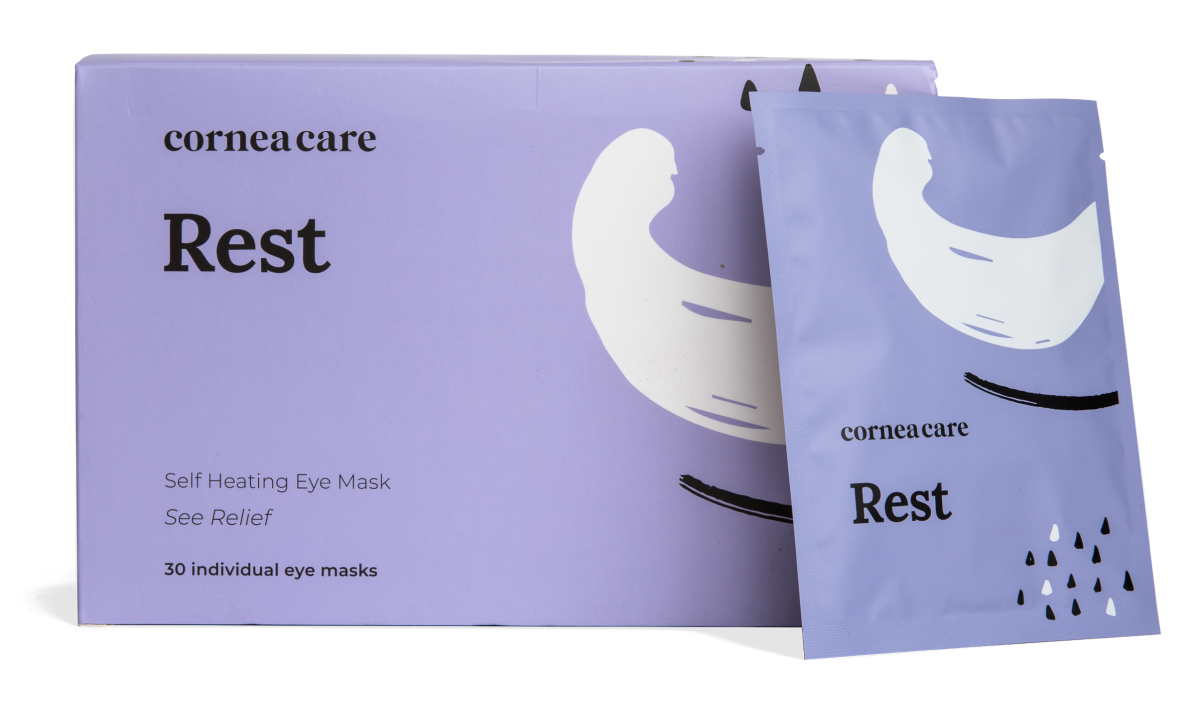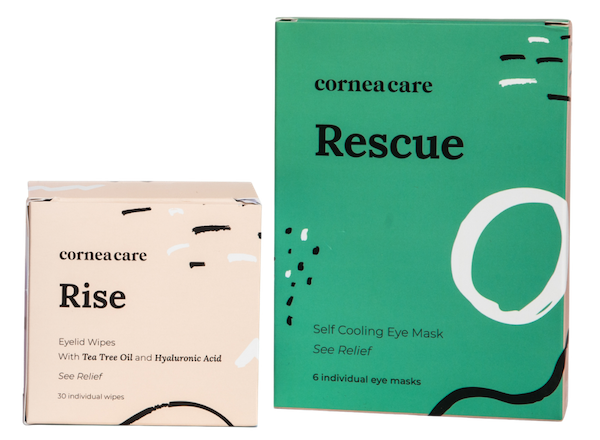Why is There a Black Spot in My Vision?
A black spot in the vision of one eye can have many causes. Most reasons for black spots are not anything to worry about, but some require a visit to your eye doctor (optometrist or ophthalmologist) to rule out anything more serious.
If you are experiencing a black spot in the vision of one eye or both eyes, you may have eye floaters or scotomas. Dark spots in your field of vision may be the result of aging, a retinal tear, inflammation, or other eye conditions. With age-related macular degeneration (AMD) you may notice a single black spot in your central vision.
We’re here to help you understand the causes of black spots in your vision, and how they can be treated.
Key Points
- Eye floaters may appear as black spots, cobwebs, or wavy strands in your field of vision as you age, and are generally harmless.
- Scotomas are blind spots that may appear as a black spot in your vision of one eye caused by certain medical conditions and eye conditions.
- Black spots with flashes of light may be a sign of a retinal tear, which should be treated by an ophthalmologist immediately.
Eye Floaters in Your Field of Vision
Black spots in the vision of one eye, or both eyes, are most often caused by eye floaters. Eye floaters appear like small spots, cobwebs, or strings in your vision, usually due to the natural aging process. They are very common and generally require no treatment.1
Eye floaters are often described as black spots, squiggly threads, or specks that float across your vision. Floaters are most noticeable when you’re looking at a light-colored wall or bright area.
In most cases of eye floaters, you’ll notice them in your vision in the years after you turn 50. Less commonly, you may have floaters at a younger age, which is no cause for alarm. However, if you notice eye floaters frequently at a younger age, see an eye doctor to rule out a serious eye condition.2
Your eyes may age together on the same timeline, or one may age faster than the other. Eye floaters appearing as threads or black spots in the vision of one eye is more common than floaters appearing in both eyes at the same time.2
Cause of Eye Floaters
The primary cause of eye floaters is aging. They are a normal and harmless part of the aging process of your eyes. Having eye floaters is not an indication that your eyes are less than healthy, however, routine eye exams are still important.
Eye floaters form as part of the natural shrinking of the vitreous of your eye as you age. The vitreous, or vitreous humor, is the gel-like part of your eye that gives your eye its shape. Tiny collagen particles in the vitreous clump together and start floating around. As these floaters move over your macula (the center of the retina), they cast tiny shadows you see as dark specks or wavy strands in your vision.2
These age-related floaters may be annoying at first but are usually harmless. In time, eye floaters may settle at the bottom of your vitreous and become less noticeable.
While floaters are very common, your risk of developing eye floaters is higher if you are nearsighted or have diabetes. Having cataract surgery or other eye surgery also increases your risk of eye floaters.2
Though most often related to the natural aging process, other eye conditions and medical conditions can cause eye floaters and black spots in your vision in one eye or both.
To keep your eyes healthy as you age, read 5 Tips to Have Healthy Eyes for Life.
Retinal Tear or Detachment
In addition to eye floaters, the natural shrinking of the vitreous can also cause retinal tears. As it shrinks, the vitreous may pull on the retina, resulting in a retinal tear.
While floaters are common and generally harmless, a retinal tear requires immediate medical attention. If you have a torn retina, it can lead to retinal detachment and possible vision loss.3
Signs of a retinal tear or retinal detachment include flashes of light and a large number of floaters, such as black spots, in your vision in one eye. You may also experience a shadow in your peripheral vision or what appears to be a gray curtain in your field of vision.3 If you have these symptoms, contact your eye care provider immediately.
Certain risk factors increase your chance of a retinal tear, such as:3
- Age
- Eye injury
- Nearsightedness
- Eye surgery
- Retinal detachment in your other eye
- Family history of retinal detachment
Contact your eye doctor right away if you have these symptoms. A retinal tear should be treated promptly to prevent retinal detachment and vision loss. Your ophthalmologist can repair a retinal tear with a quick in-office procedure.

Rest
Warm Compresses
Perfect for eye dryness, fatigue, tearing, and puffiness of the eyelids. Free shipping 📦.
Try today - $30
Inflammation of the Eye (Uveitis)
Your eye can become swollen due to inflammation, resulting in an eye condition called uveitis. Severe uveitis may cause black spots in your vision in one eye, caused by cells floating in the vitreous or the aqueous humor of your eye.4
Inflammation of the eye usually occurs as a result of your immune system fighting an infection, such as an eye infection. Inflammation can also occur if you have an underlying autoimmune condition.
Without treatment, uveitis can cause vision loss. Call your eye doctor if you have the following symptoms, which may appear suddenly:4
- Blurred vision
- Eye floaters
- Painful eyes
- Eye redness
- Light sensitivity
The risk of uveitis is higher for smokers, and most often occurs in people between 20-60 years of age. If you have an autoimmune disease, such as lupus, multiple sclerosis, or rheumatoid arthritis, your risk of uveitis and black spots in your field of vision may be higher. Other risk factors include infections and cancers that affect the eye.4
Age-Related Macular Degeneration
Age-related macular degeneration (AMD) is a disease of the retina that gradually worsens over time.
The retina, located at the back of your eye, senses light that enters your eyes and sends signals to your brain. The small central portion of your retina is called the macula, and with age-related macular degeneration (AMD), it wears down as you age causing loss of vision.5
There are two types: the more common form, dry AMD, and the more severe form, wet AMD. Wet AMD causes blurred central vision and black spots in the vision of one or both eyes.
With wet AMD, unstable blood vessels grow under your macula leaking fluid and blood into your retina, which can result in severe loss of central vision.5
Age-related macular degeneration is more common in adults over the age of 60, and is the primary cause of vision loss in this population.5
Symptoms of AMD may include:5
- Straight lines in your vision appearing curved or bent
- Single black spot in your vision
- Poor central vision in one eye or both eyes
- Trouble recognizing people’s faces
- Difficulty seeing close-up
- Slow adjustment to low-light environments
Risk factors for AMD include being a white adult over the age of 50, smoking, high blood pressure, and cardiovascular disease. Your risk for AMD is also greater if you have a family history of eye disease.6
Wet AMD can be treated with medication or laser therapy. If you have black spots in the vision of one eye and other symptoms and risk factors for AMD, see your eye care provider. Your eye doctor can determine the stage of your disease and discuss treatment options. You may also consider seeing a low-vision rehabilitation specialist for support.
To learn more about AMD, read Age-Related Macular Degeneration: Early Detection is Key.
Diabetic Retinopathy
Diabetic retinopathy is an eye condition that affects the blood vessels in the retina (the back of your eye). In the late stages of the disease, abnormal blood vessels leak into the vitreous of your eye. The bleeding causes black spots or cobwebs to appear in your field of vision. This condition affects people with diabetes and can cause vision loss and blindness.7
To prevent diabetic retinopathy, follow your doctor’s recommendations to manage your diabetes and have a comprehensive dilated eye exam annually.7
If you have diabetes and notice new black spots in your vision in one eye or both eyes, see your eye doctor.
Central Serous Chorioretinopathy
Another eye condition that can cause black spots in your vision in one eye or both is called central serous chorioretinopathy. Central serous chorioretinopathy is caused when fluid builds up under your retina, causing vision distortion.8
Central serous chorioretinopathy is most common in men between the age of 30 and 60. In most cases, the condition resolves without treatment. However, it’s important to have regular eye exams with your eye doctor, as the condition often recurs and may require treatment to prevent vision loss.8

Starter
Eyelid Hygiene Plan 1
Perfect for eye dryness, burning, itching, pain, crusting/flaking of eyelashes and inflamed eyelids. Free shipping 📦.
Try today - $35
When a Black Spot is a Blind Spot
Scotoma is the medical term for a blind spot, which is more commonly found in one eye but can happen in both eyes.9
When there is a spot on the retina (the light-sensing area at the back of your eye) that is impaired, it fails to send signals to your brain, resulting in a blind spot.9
A scotoma differs from a floater in that it doesn’t move around within your field of vision. If you have a black spot in your vision in one eye that is stationary rather than floating, you may have a positive scotoma.
A positive scotoma is a blind spot that appears as a spot of color in your visual field. Conversely, a negative scotoma is a missing area of vision.9
There are four different types of scotoma. Two types that may cause a black spot in the vision of one eye are called central scotoma and paracentral scotoma.9
With central scotoma, the blind spot is in the center of your vision. It may appear as a dark or black spot, or a blurred area. Paracentral scotoma differs in that your blind spot is off to the side rather than in your central vision.9
The other two types are scintillating scotoma, which occurs with migraines, and junctional scotoma, caused by damage to the brain.9
Causes of Scotoma
A number of medical conditions and eye conditions can cause a scotoma, including:9
- Retinal detachment
- Brain or eye injuries
- Glaucoma
- Stroke
- Migraines
- Age-related macular degeneration
- Diabetic retinopathy
- Cancer
- Multiple sclerosis (MS)
- Side effects of certain medications
Treatment for scotoma is focused on managing the related condition causing the blind spot in your vision, such as glaucoma, macular degeneration, migraines, or stroke.9
A scotoma can affect your ability to read or drive. Your eye doctor may refer you to a low-vision rehabilitation specialist for advice and support.
When to See your Eye Doctor about a Black Spot in Vision in One Eye
Seeing a few black spots (eye floaters) in your vision in one eye is perfectly normal as you age. While most floaters are harmless, certain symptoms should prompt an immediate visit to an eye care professional.
If you notice a sudden increase in new floaters, flashes of light, or a gray curtain or shadow spreading across your vision, make an appointment with an eye doctor right away. These signs could indicate a retinal tear or detachment, which can lead to permanent vision loss if not treated quickly. If floaters are accompanied by pain, redness, or a noticeable decrease in vision, conditions like uveitis or diabetic retinopathy may be the cause.
Additionally, if you have sudden black spots in your vision that are not floaters, give your eye doctor a call. If you have diabetes or another medical condition that can cause vision problems, call your eye doctor if you notice changes in your vision.
Your eye care provider will conduct an eye exam to determine the cause of the black spot in your vision in one eye and recommend the best course of treatment.
Putting It All Together
While eye floaters may appear as annoying black spots in your vision in one eye, or both eyes, the good news is they’re usually nothing to worry about. Over time, you get used to them and hardly notice the floaters as much.
Visit your eye doctor if your symptoms and medical history mean the black spot in your vision in one eye could be more serious than normal eye floaters.
Make the effort to take good care of your eye health. Choose a healthy diet and include CorneaCare eye vitamins and omega-3 supplements to fill any gaps. Maintain good eyelid hygiene and have routine eye exams with your doctor.
What’s Next
Learn more about how to keep your eyes healthy for life! Browse through the educational articles on the Eye Health & Wellness blog or check out these titles next:



